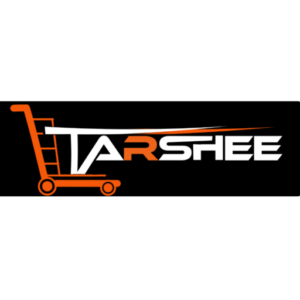Top Tips for Selling Successfully on Online Marketplaces

Selling on online marketplaces has become a powerful way for businesses and individuals alike to reach global audiences, increase revenue, and build a brand. Whether you’re a seasoned seller or just starting, it’s essential to understand the strategies that can set you apart and boost your success. Here’s a comprehensive guide with top tips for selling effectively on platforms like Amazon, eBay, Etsy, and Tarshee.co.uk.
1. Choose the Right Marketplace for Your Products
Different marketplaces cater to varying audiences, and choosing the right one can significantly affect your success. Here’s a quick breakdown:
- Amazon and eBay: Ideal for a broad range of products, including electronics, clothing, books, and household items. Amazon’s large audience benefits from Prime shipping, while eBay has loyal buyers seeking unique and second-hand items.
- Etsy: Specializes in handmade, vintage, and unique items. It’s a fantastic platform for artisans, crafters, and vintage collectors.
- Tarshee: Focuses on specific product categories or themes, so ensure your products align with the marketplace’s audience and category niches.
Selecting the marketplace that best aligns with your product type and target audience will maximize your visibility and sales potential.
2. Optimize Your Product Listings
The quality of your product listing plays a crucial role in converting potential buyers. Here’s how to create an appealing and effective listing:
- High-Quality Images: Use clear, high-resolution images that showcase your product from multiple angles. Natural lighting, minimalistic backgrounds, and close-up shots help buyers visualize the product.
- Compelling Title: Include key product features in your title, such as brand name, color, size, and other unique characteristics. A title like “Handcrafted Leather Wallet – Brown, Slim, RFID Blocking” is more informative and search-friendly.
- Detailed Descriptions: Write a clear, concise description that covers all essential details, including size, material, features, and care instructions. A well-crafted description builds trust and answers potential questions.
- Use Relevant Keywords: Research keywords relevant to your product category and use them in your title, description, and tags. Keywords improve searchability and ensure your product reaches the right audience.
By optimizing your listings, you make it easier for buyers to find your products and help them make an informed purchasing decision.
3. Set Competitive Prices
Pricing can be a deciding factor for many buyers, so it’s important to set a fair and competitive price. Consider these strategies:
- Market Research: Check the prices of similar products on the platform and assess where your pricing fits. Aim to stay within the competitive range while considering your profit margin.
- Value-Based Pricing: If your product has unique qualities, like handmade craftsmanship or premium materials, emphasize these attributes in your listing to justify a higher price.
- Offer Discounts or Bundles: Occasionally, offering discounts or product bundles can attract more buyers. However, ensure that the discount still allows for a sustainable profit margin.
Competitive pricing positions your product attractively in the marketplace and appeals to budget-conscious buyers.
4. Build Trust with Buyers
Trust is a significant factor in online shopping. To build credibility and encourage buyers to choose your product, focus on these elements:
- Detailed Seller Profile: Complete your seller profile with a professional photo, contact details, and a brief background. Buyers often check profiles, so being transparent can create a positive first impression.
- Respond Promptly: Prompt responses to buyer inquiries can make a strong impression. Try to respond to questions within 24 hours, and provide helpful, detailed answers.
- Clear Return Policy: Make your return policy clear and customer-friendly. A fair and transparent return policy builds buyer confidence and can lead to more sales.
Building a trustworthy reputation encourages repeat customers and positive reviews, which ultimately boosts your standing in the marketplace.
5. Leverage Customer Reviews
Positive reviews play a vital role in boosting your product’s visibility and credibility. Here are a few ways to encourage and utilize reviews:
- Request Reviews: After a successful sale, politely ask buyers to leave a review. A friendly follow-up message can make a difference.
- Respond to Feedback: Show appreciation for positive reviews by thanking customers. For negative feedback, address concerns professionally to demonstrate your commitment to customer satisfaction.
- Use Reviews in Marketing: Showcase positive reviews on your social media or website to build trust and attract potential buyers.
Good reviews not only influence buying decisions but also increase your product’s ranking within the marketplace, making it more discoverable.
6. Offer Fast and Reliable Shipping
Shipping speed and reliability are important factors for buyers. Here’s how to ensure smooth and efficient shipping:
- Choose a Trusted Courier: Use a reputable shipping company known for timely deliveries. Many marketplaces offer integrated shipping solutions with tracking options.
- Provide Tracking: Providing tracking information helps buyers monitor their packages and reduces anxiety around delivery timelines.
- Accurate Shipping Costs: Avoid underestimating shipping costs. Offer free shipping when feasible, but ensure the price is built into the product cost.
Fast and reliable shipping enhances the buyer’s experience and increases the likelihood of repeat purchases.
7. Promote Your Products
Using both internal and external promotional methods can boost your product’s visibility and attract new customers. Here’s how:
- Sponsored Ads: Many marketplaces, including Amazon, offer advertising options. Sponsored ads can position your product prominently within search results.
- Social Media Marketing: Share your listings on social media channels like Instagram, Facebook, and Pinterest. Use hashtags relevant to your product to reach a wider audience.
- Email Marketing: Build an email list from previous buyers or interested customers and send updates on new arrivals, special offers, or holiday promotions.
Promoting your products across multiple platforms helps you reach more buyers and increases the chances of sales.
8. Focus on Excellent Customer Service
Customer service is a cornerstone of successful selling. Providing excellent service can earn you loyal customers and glowing reviews:
- Resolve Issues Quickly: Be proactive in resolving any complaints or issues. Fast and fair problem-solving leaves a positive impression.
- Personalize Interactions: Personalize messages to buyers when appropriate. Small gestures like a thank-you note or follow-up message can create a lasting, positive impression.
- Provide Clear Communication: Keep buyers informed throughout the process, from order confirmation to shipping updates.
Excellent customer service not only improves buyer satisfaction but can also lead to positive word-of-mouth referrals.
9. Monitor Inventory and Restock Popular Items
Keeping track of your inventory is vital to avoid out-of-stock scenarios, which can frustrate potential buyers. Here are some tips:
- Use Inventory Management Tools: Many marketplaces offer tools to track your stock. You can also use third-party software for more advanced inventory management.
- Restock Bestsellers: Identify which items sell the most and ensure they are regularly restocked. Running out of popular products can result in missed sales opportunities.
- Seasonal Stocking: Pay attention to seasonal demand (such as holidays) and plan your stock levels accordingly to meet increased demand.
Having the right stock at the right time can prevent lost sales and maximize revenue.
10. Track and Analyze Your Performance
Regularly reviewing your performance can help you understand what works and where you can improve. Consider these metrics:
- Sales Data: Analyze your sales patterns and identify which products are top-sellers.
- Traffic Sources: Identify where your buyers are coming from (marketplace search, ads, or social media) and optimize those channels.
- Conversion Rates: Track how many views turn into sales to evaluate your listings’ effectiveness. High views but low sales could indicate a need for listing improvement.
Analyzing these metrics can help you refine your strategy, optimize your listings, and ultimately boost sales.
Final Thoughts
Selling on online marketplaces offers incredible opportunities for growth, but success requires a blend of strategy, customer focus, and adaptability. By selecting the right platform, optimizing your listings, pricing competitively, and prioritizing customer satisfaction, you can build a successful online presence. Remember, consistent effort and a proactive approach are key to long-term success in the competitive world of online marketplaces. Happy selling!

